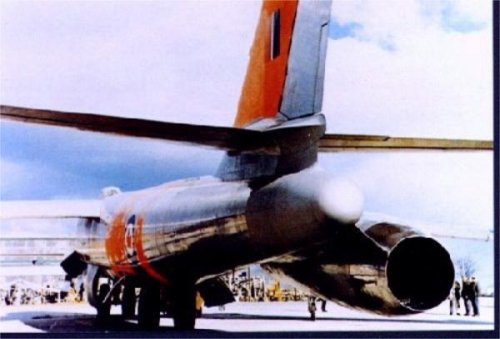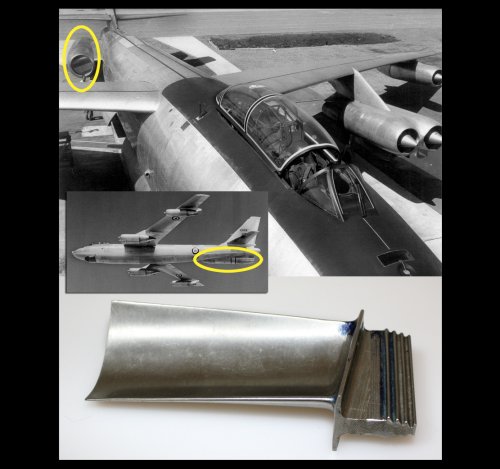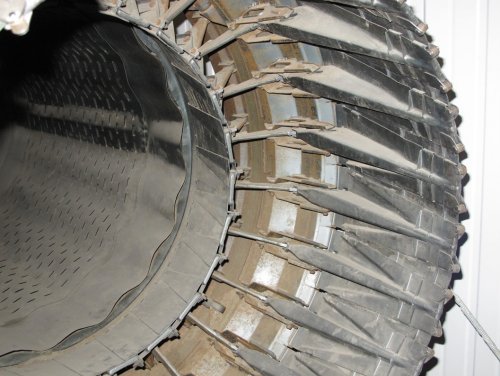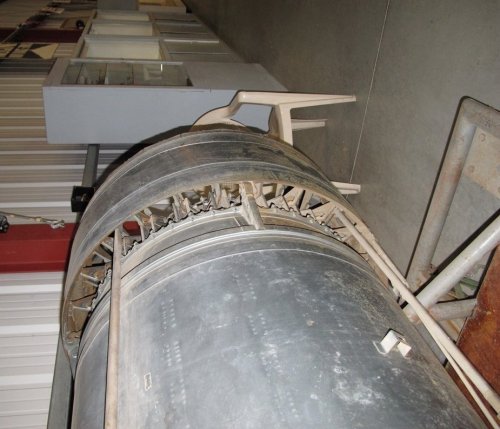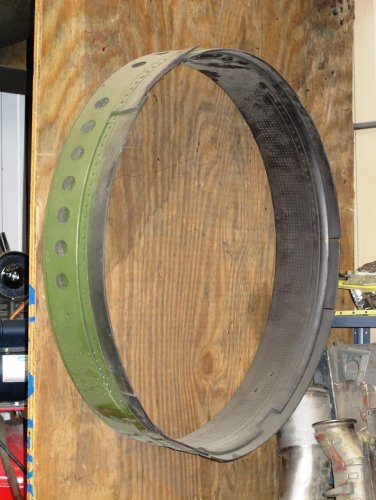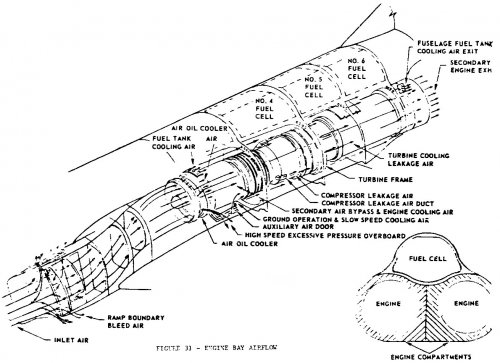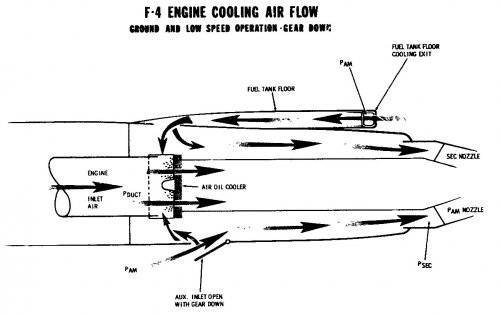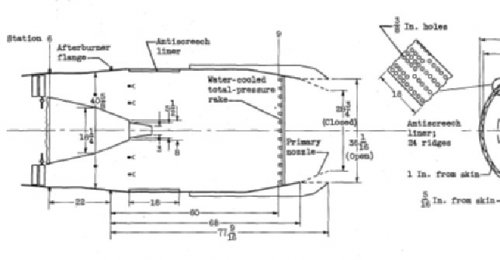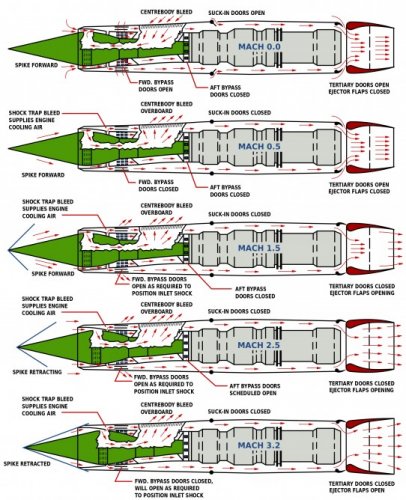Charleybarley,
Another mislink!... it should have pointed to 'Pursuit of Power' ... you can download pdf or other format
here.
I have corrected original link too. The report is 'data rich' but I think the concluding remarks are fascinating (we must spend some time on compressor stall). I've cut and paste them:
CONCLUDING REMARKS
An investigation of the prototype Iroquois turbojet engine in an
altitude t e s t chamber disclosed a severe stall problem in the high-pressure
compressor at low Reynolds numbers and low inlet-air temperatures.
Consequently, the operating range of the original engine configuration
was severely restricted below Reynolds number indices of 0.45 at
moderate and high corrected rotor speeds. The reduced operating range
resulted in high thrust penalties. For example, at standard conditions
at an altitude of 56,000 feet and Mach number of 0.9 the maximum possible
net thrust was 26 percent below that available without compressor s t a l l .
In contrast, the engine exhibited a large operating margin at simulated
Mach numbers of 1.5 and 2.0 at altitudes of 50,000 to 60,000 feet (inlet air
temperatures between 100O and 250° F and Reynolds number indices of
approximately 0.4) .
Examination of the component data of the original engine configuration
revealed that the s m a l l stall margin of the high-pressure compressor,
when it was operating as an integral part of the engine, was basically
due to the radial flow distortion at its inlet. This and an accompanying
Reynolds number effect on the high-pressure compressor resulted in the
curt ailed engine operation at altitude.
As a consequence, the manufacturer produced engine modifications
that included variable high-pressure compressor inlet guide vanes, increased
turbine-stator areas, and other modifications of a lesser nature.
The effect of these modifications was, in general, beneficial but inadequate
as far as engine operating limits were concerned. These modifications
were incorporated without penalizing the engine performance,
The analysis of the component performance of the three engine configurations
disclosed that of the modifications employed, opening the
turbine-stator areas was the most effective modification and the one
requiring the least amount of development, In addition, a practical
reduction of the flow distortion entering the high-pressure compressor
still appears to offer profitable stall margin improvement.
Lewis Flight Propulsion Laboratory
National Advisory Committee for Aeronautics
Cleveland, Ohio, June 13, 1958
Also an afterburner report can be downloaded
here

